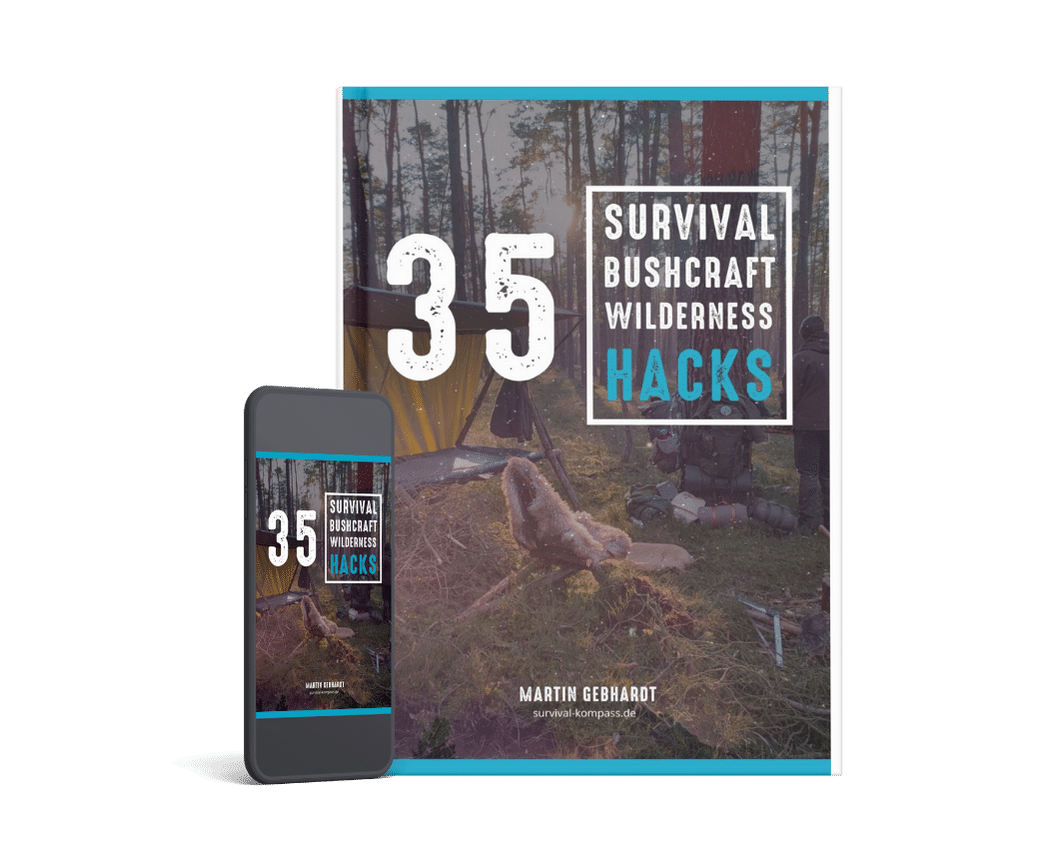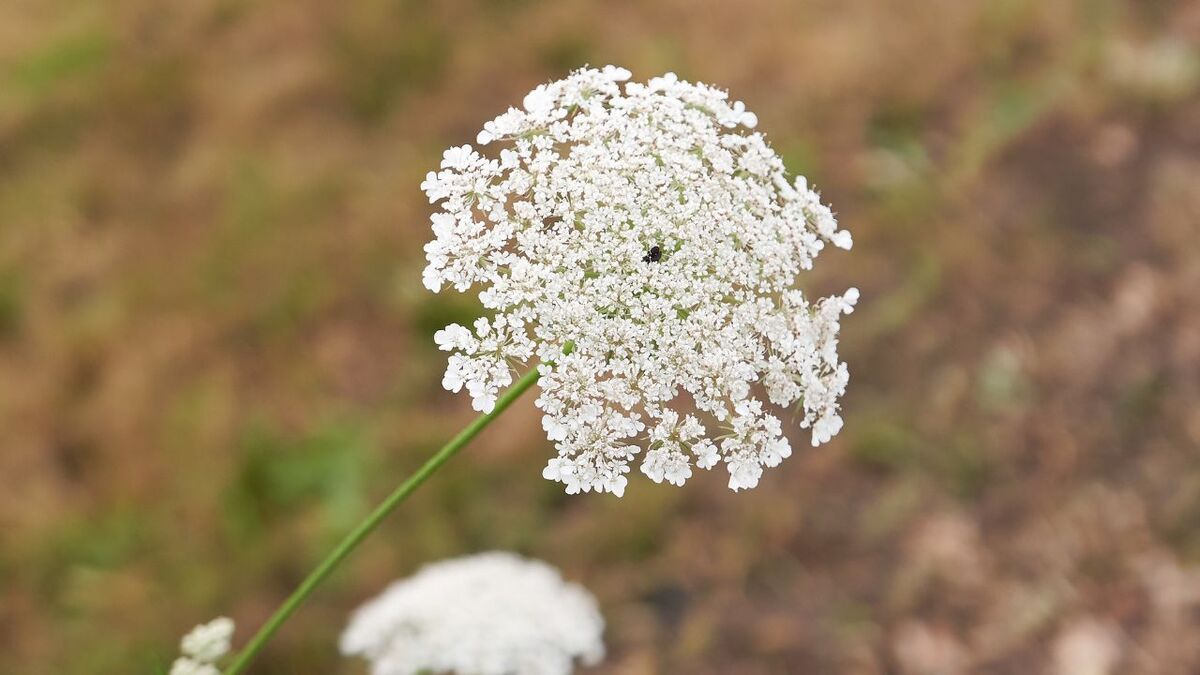
The Wild Carrot – Between Witch's Herb, Wild Herb and Dwarven Gold
👉 The key facts from this guide
- Wild carrot is the primordial mother of our carrots and more versatile than you think! You usually recognize it by the characteristic dark spot in the middle of its white flower umbel.
- Critical: Do not confuse it with highly poisonous doppelgangers like spotted hemlock! Always pay attention to the carrot scent, the hairy stem, and the spherically rolled-up flower heads after flowering. When in doubt: hands off!
- Almost the entire plant is edible: In the first year, the roots are tender for salads, the leaves are suitable for pestos, and the seeds are a great spice or tea for digestive problems.
- It was magical even in earlier times! Our ancestors associated wild carrot with dwarf stories (gold finds!), New Year's customs for a full purse, and even fertility rituals.
- It is not only delicious but also a small pharmacy: Its seeds can help with urinary tract infections, and the plant generally has antioxidant, liver-protective, and carminative effects.
- For your garden, it's a win: It's easy to care for, loves the sun, and is a paradise for bees and butterflies – a true hero for biodiversity!
You think this is just a plant? Think again.
The Wild Carrot is a survival aid for times of need, an aphrodisiac for medieval sweethearts, a decorative dream in your salad and – sorry – the ultimate carrot mother.
Spoiler: Whoever confuses it with spotted hemlock has a date with emergency services.
So: read on – or never eat anything from the roadside again.
Wild Carrot at a Glance
| Feature | Wild Carrot (Daucus carota subsp. carota) |
|---|---|
| Family | Apiaceae (Umbelliferae) |
| Height | 30–120 cm |
| Life Cycle | Biennial: Year 1 Root, Year 2 Flower |
| Flower | White umbel with dark spot ("Queen Anne's Lace flower") |
| Distinguishing Feature | Carrot scent, hairy stem, curled fruit head |
| Usage | Culinary, Medicinal Plant, Myth, Decoration |
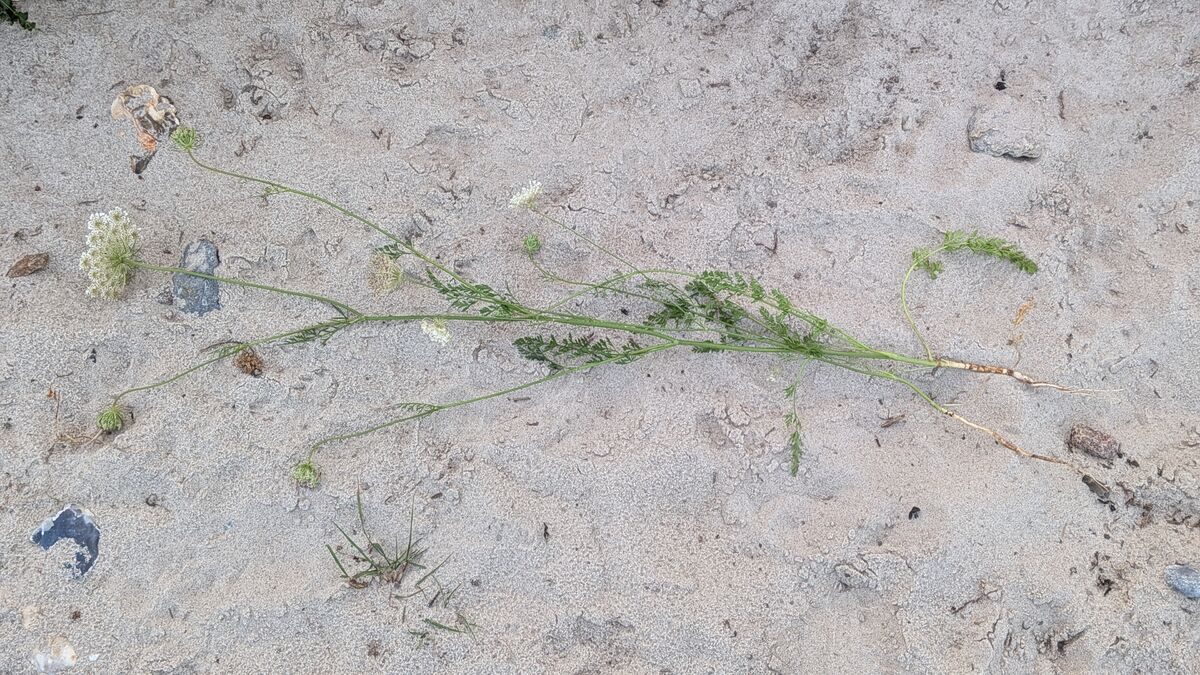
What she can do: Carrot Mother with Secrets
Did you know that today's carrot is a designer baby?
It descends from the wild carrot, an Afghan black carrot, and a Southern European giant carrot.
And while the supermarket carrot is dutifully orange, its wild mother still lives outside. Free. Prickly. And sometimes biting.
And hey: She was already sexy before the term "superfood" was even invented.
She heals, she protects, she scents – and she forgives no mistake.
(From an old herbal book, presumably by someone with a carrot allergy.)
Myth, Magic, and Carrot – What Our Ancestors Knew
The Wild Carrot was once more than a side dish for medieval stew. It was a magic sign. A threshold. A plant with a will of its own.
The Dwarf Story
“Dwarves love carrots.” Sounds like something from a children's book, but it's a real folk belief: Whoever dug up a particularly beautiful wild carrot, it could happen to them that the dwarves would place a gold piece in the planting hole during the night.
Spoiler: Today, you'll get at most a snail for free.
The New Year's Custom
„Eat a wild carrot on New Year's Day – and your wallet will stay full.“
Will it work? No idea. But it tastes better than marzipan lucky pigs.
The Bird's Nest Magic
When the umbel curls up after flowering, it looks like a small nest. In some regions, this “nest” was filled with wishes and buried – as a fertility ritual.
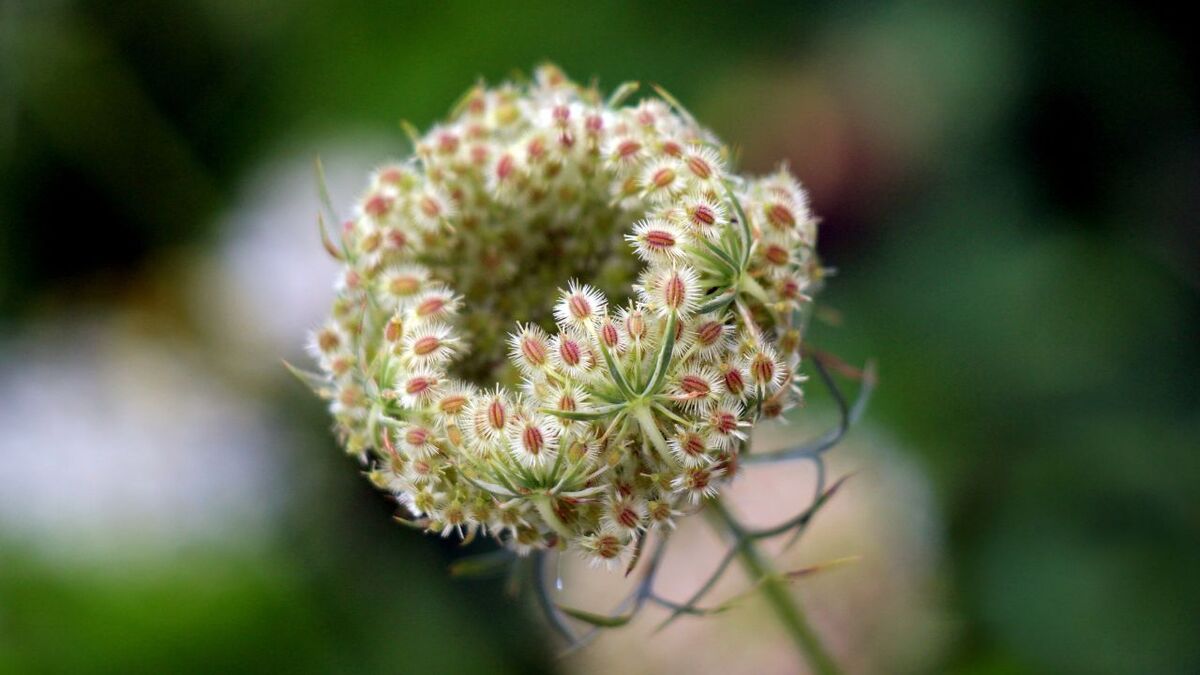
How to spot them (and survive it)
Want to go out and collect? Then take a close look.
For this is not a game.
👉 If you would like to learn how to identify edible wild plants safely, you will find here a practical guide for beginners.
Checklist for Secure Detection:
The dark spot in the center of the umbel: not an insect, not dirt – a true lure for pollinators.

The scent – rub a leaf. Smells like carrot? Jackpot.
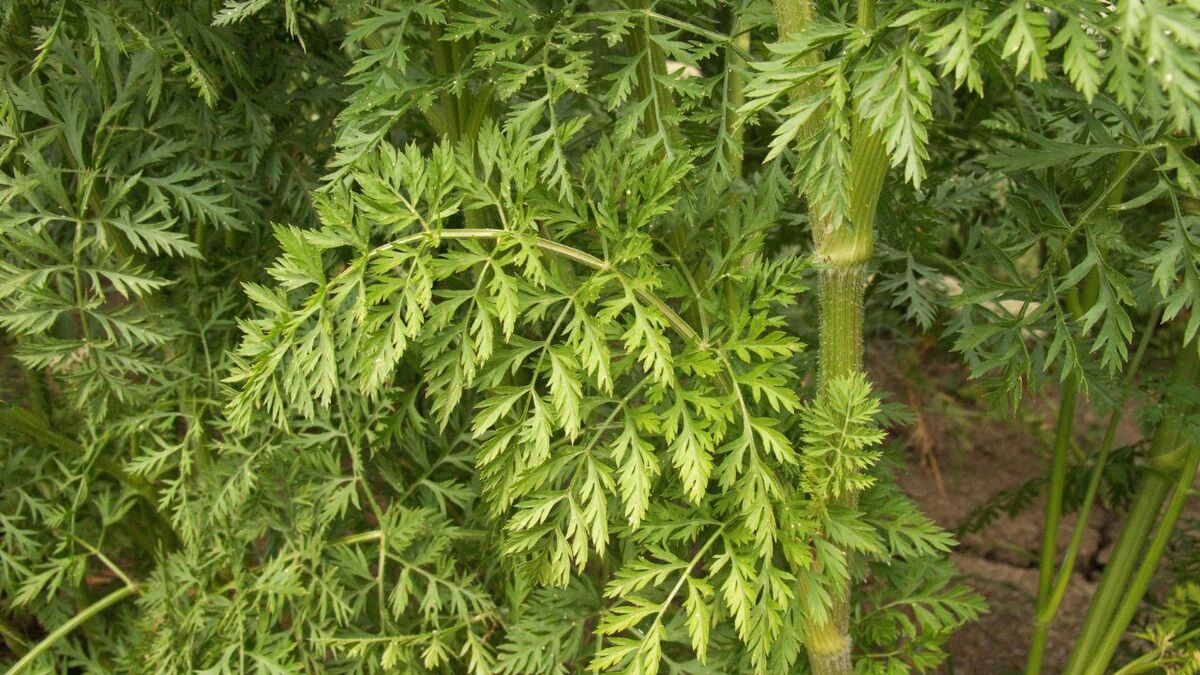
The stem – green, grooved, finely hairy. Not purple. Not spotted.
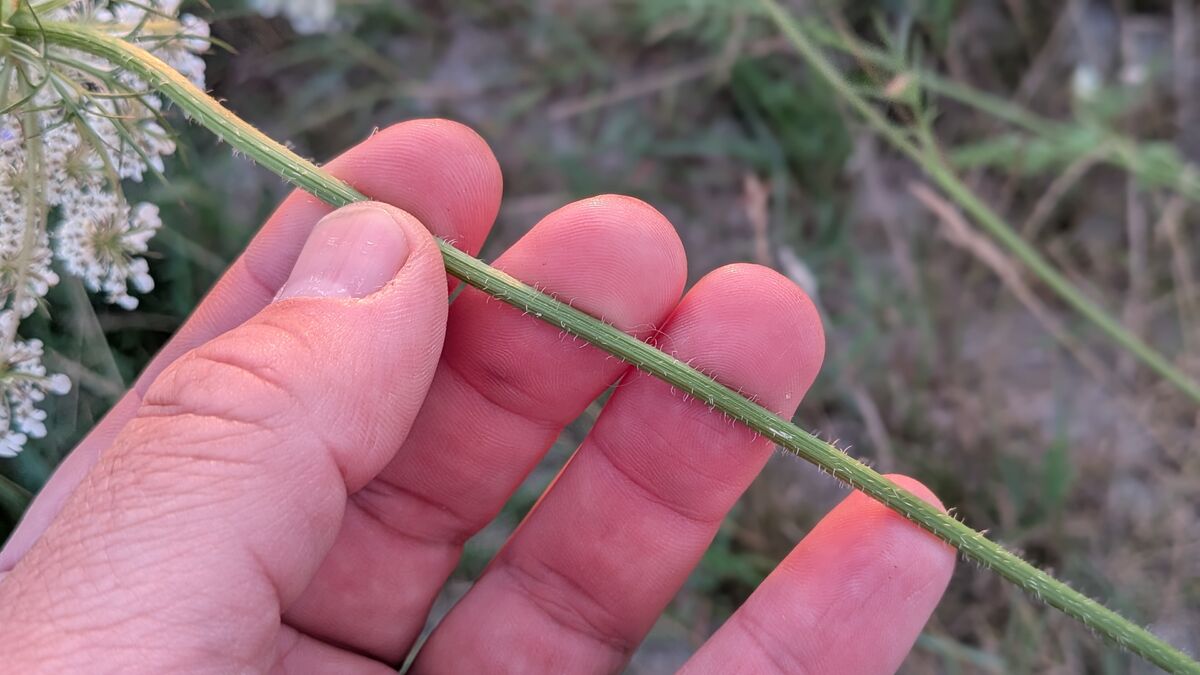
The umbel – after blooming, it contracts into a ball like a bird's nest. No other umbel does it so beautifully.
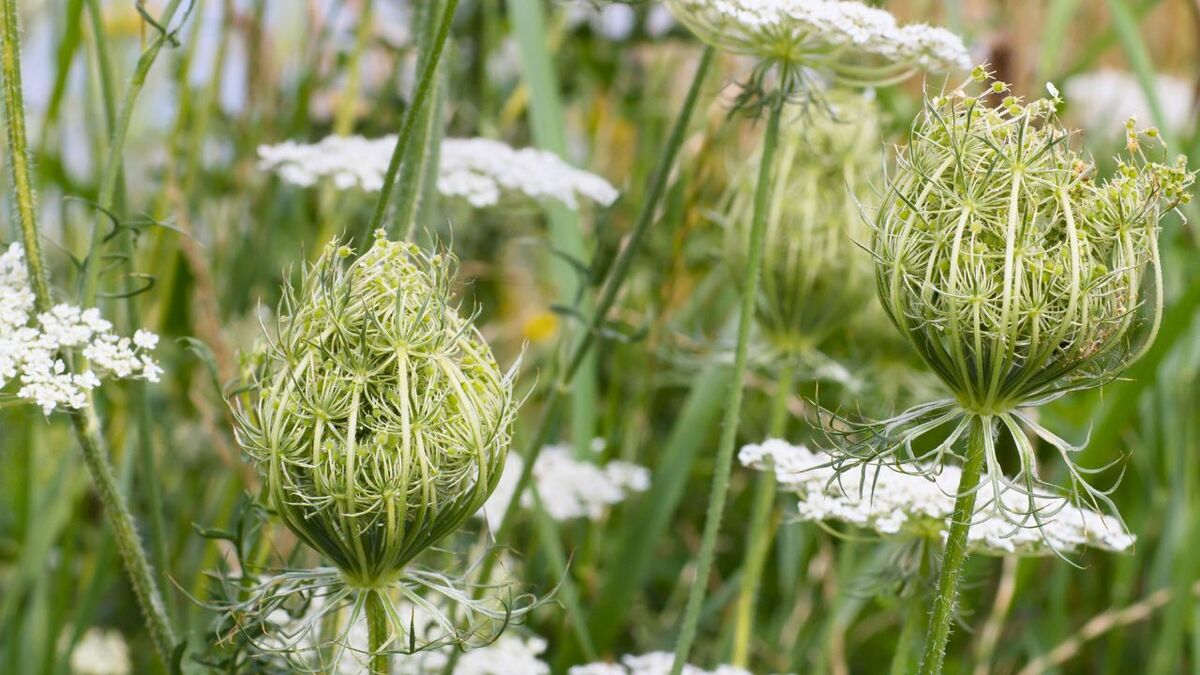
The root – whitish, delicate, slightly sweet. Soft in the first year, in the second: woody like an old fence board.
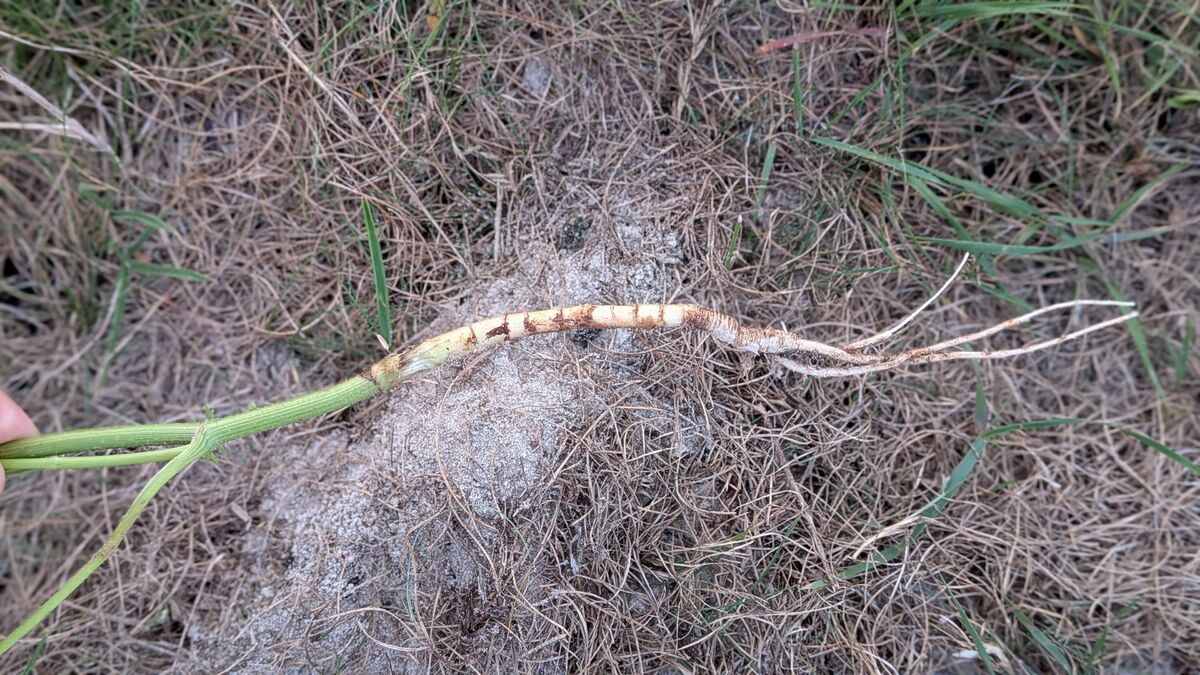
The Ultimate Comparison Table: Friend or Foe?
| Characteristic | Wild Carrot | Hedge Chervil | Fool's Parsley ☠️ | Spotted Hemlock ☠️ |
|---|---|---|---|---|
| Toxicity | edible | slightly toxic | toxic | highly toxic (deadly) |
| Dark central flower | present | absent | absent | absent |
| Stem | green, grooved, hairy | often with purple tinge | slightly angular, wine-red tinge, bluish bloom | round, hollow, longitudinally grooved, bluish-violet spots |
| Leaves | finely feathered, fragrant | coarse, faint scent | smoother, leek-like scent | smells like mouse urine |
| Fruit cluster | curled inward (“bird’s nest”) | flat | flat | flat |
| Scent | carrot-like | mild | unpleasant, leek-like | pungent, urine-like |
⚠️⚠️⚠️ Absolute Warning: In case of suspected consumption of Fool's Parsley (symptoms can include severe burning in the mouth, increased pulse, paralysis) – IMMEDIATELY call emergency services and empty the stomach! This is a matter of life and death! 🆘
👁️ Read also: You should know these dangers when collecting wild plants
Cuisine: It hardly gets any wilder
Wild carrot is not only edible — it is a true gourmet star of natural cuisine.
The Root
In the first year, a delicate, white delicacy. In the second year: more like toothpicks.
Best grated raw, marinated with lemon and oil, or cooked with soup vegetables.
The Leaves
Spicy, parsley-like. For pestos, salads, or as Forest Powergreen in the smoothie.

The Seeds
Aniseed-like. Pungent. Perfect as a spice – or as a tea for digestive problems.
And for those who like it bold: roasted as an outdoor coffee substitute.
The Blossoms
Edible. Slightly sweet. Baked in batter, a wild elderflower remix.
👉 Want more recipes with wild ingredients? Here are 9 wild herb recipes for outdoor and camping.
Healing Effects: What it truly can do
The Wild Carrot is a real Botany-Multitool.
- diuretic (Seed tea – a classic for urinary tract infections)
- antioxidant (Flavonoids, baby!)
- liver-protective (Keyword: Carotol in seed oil)
- wound-healing (formerly: root paste on burns)
- flatulence-relieving (works better than fennel tea, honestly)
💡 You can find more tips for your home first-aid kit in the guide on Medicinal plants for your garden
For Your Wild Garden: The Carrot as a Cohabitant
She is low-maintenance, profound, and useful. Like an introverted hippie.
- Sowing: March to April or September – Cold germinator, loves it fresh
- Soil: dry, well-drained, lime-loving
- Location: sunny, preferably in the company of insects
- Care: almost none. Water only in Sahara-like conditions.
It is bee paradise, swallowtail caterpillar canteen, and soil healer all in one.
Conclusion: The wild carrot is not a vegetable. It is an experience.
She smells like childhood in the garden.
It tastes like adventure on the tongue.
She lives free, stands out – and cannot be tamed.
🌿 If you had to survive in the wilderness, you would know: wild carrot is edible, but also these edible plants are your emergency food.
And the next time you walk past a white umbel with a dark spot, remember:
You are currently looking into the eyes of the mother of all carrots.


Author of the guide
Martin Gebhardt
Hey, I'm Martin. On my blog, you will learn the basics and numerous details about living in the wild. I think survival, bushcraft and the good life in nature are the keys to happiness. Find me here on Instagram or on YouTube. You can find more about my mission on the About Me page.
Was this guide helpful?
19 people found this guide helpful.
5.00 out of 5 points (19 Ratings)
Comments (0)
This post may contain affiliate links. So if you click on the links and make a purchase, I will receive a small commission at no additional cost to you. Click here, to learn more about it.


